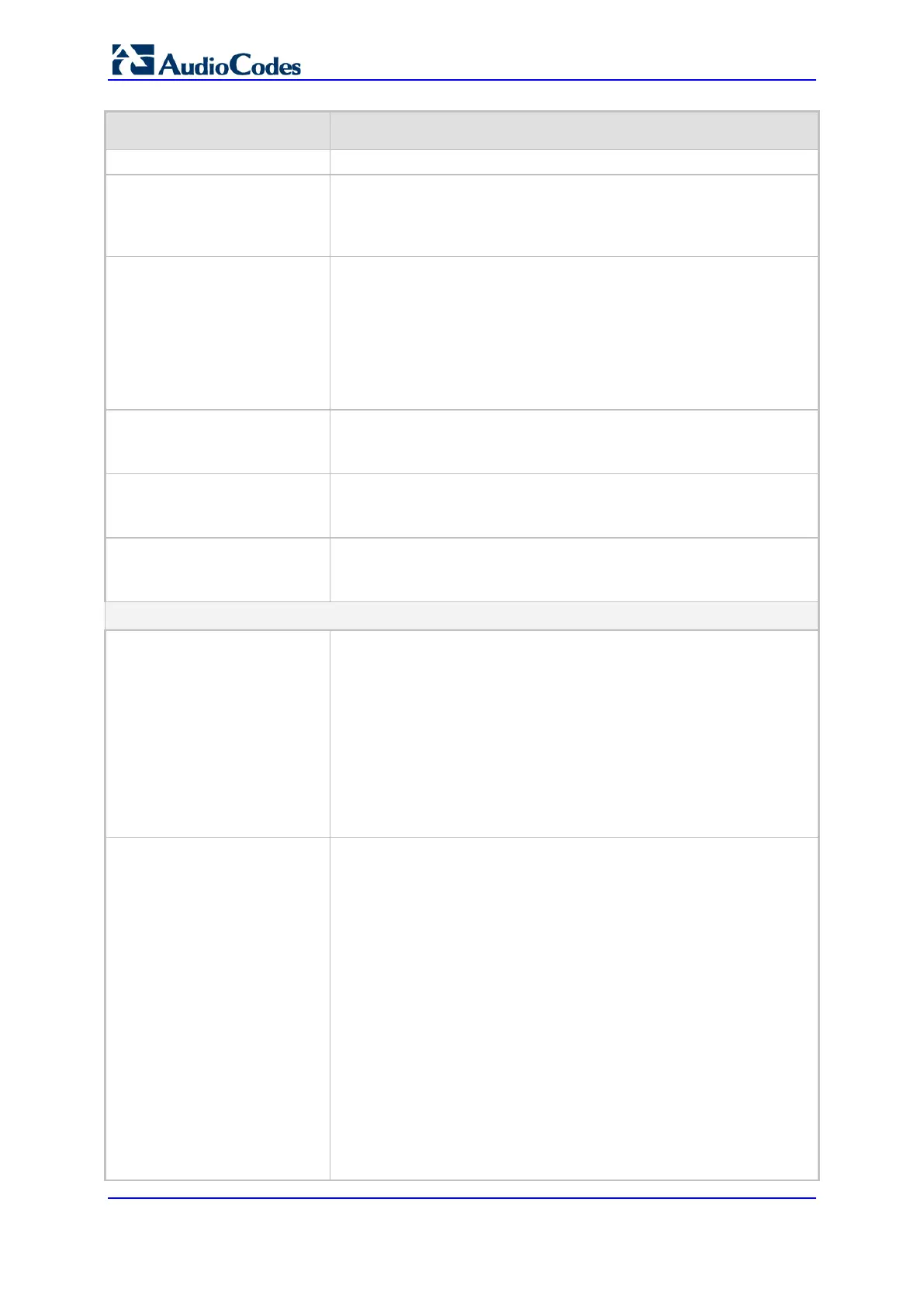SIP User's Manual 774 Document #: LTRT-83310
Mediant 600 & Mediant 1000
Parameter Description
Note: For this parameter to take effect, a device reset is required.
Web: End of Record Trim
[cpEndOfRecordCutTime]
Defines the maximum amount (in milliseconds) of audio to remove
from the end of a recording. This is used to remove the DTMF
signals generated by the end user for terminating the record.
The valid range is 0 to 65,535. The default is 0.
[NFSClientMaxRetransmissi
on]
Since NFS is carried over UDP, retransmission is performed for
messages without a response. This parameter enables the user to
define the maximum number of retransmissions performed for such a
command. By default, the parameter is not used and the number of
retransmissions is derived from the parameter
ServerRespondTimeout.
The range is 1 to 100. The default is 0 (derived from
ServerRespondTimeout).
[StreamingPlayingUnderRu
nTimeout]
Defines the maximum time (in msec) that the device waits for the
streaming server to acknowledge data sent to it.
The range is 100 to 10,000. The default is 5,000.
[StreamingRecordingOverR
unTimeout]
Defines the maximum time (in msec) that the streaming server waits
to acknowledge a data request sent from the device.
The range is 100 to 10,000. The default is 5,000.
[ServerRespondTimeout]
Defines the maximum time (in msec) that the device must wait for a
response when operating with a remote server.
The valid range is 1,000 to 90,000. The default is 5,000.
Automatic Gain Control (AGC) Parameters
Web: Enable AGC
EMS: AGC Enable
[EnableAGC]
Enables the AGC mechanism. The AGC mechanism adjusts the
level of the received signal to maintain a steady (configurable)
volume level.
[0] Disable (default).
[1] Enable.
Notes:
This parameter can also be configured per Tel Profile, using the
TelProfile parameter.
For a description of AGC, see Automatic Gain Control (AGC) on
page 164.
Web: AGC Slope
EMS: Gain Slope
[AGCGainSlope]
Determines the AGC convergence rate:
[0] 0 = 0.25 dB/sec
[1] 1 = 0.50 dB/sec
[2] 2 = 0.75 dB/sec
[3] 3 = 1.00 dB/sec (default)
[4] 4 = 1.25 dB/sec
[5] 5 = 1.50 dB/sec
[6] 6 = 1.75 dB/sec
[7] 7 = 2.00 dB/sec
[8] 8 = 2.50 dB/sec
[9] 9 = 3.00 dB/sec
[10] 10 = 3.50 dB/sec
[11] 11 = 4.00 dB/sec
[12] 12 = 4.50 dB/sec
[13] 13 = 5.00 dB/sec
[14] 14 = 5.50 dB/sec

